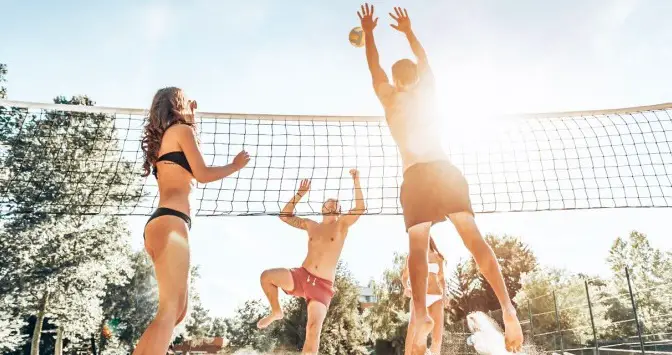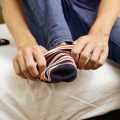*This page may contain affiliate links. When you buy through these links, we may earn a small commission at no extra cost to you.

Whether you believe in global warming or not, North America’s summers are getting warmer.
Meteorologists have already confirmed this to be true. Therefore, if you like to play beach volleyball, you need to prepare for the effects of the heat.
Wearing sand socks while playing beach volleyball is something you need to consider because they protect your feet from the sand’s heat and can help drastically improve your game.
If you are looking to buy the best sand socks for beach volleyball, game brand names like Tilos, Seavenger, and BPS Storm is good to opt for, among many others.
Between the UV rays of the sun and the increased risk of dehydration, you cannot take any chances.
It’s even worse if you’re walking barefooted on the sand because the sun can heat the sand quickly.
Would you want to play volleyball while stepping on 100-degree sand?
You could end up with burns on the bottom of your feet before you even finish your volleyball game. It is not worth the gamble.
Fortunately, there could be a solution to this hot sand problem. And that are sand socks, which we will discuss in the article below.
What Are Sand Socks?
You would still get burned if you wore plain 100% cotton socks while stepping on hot sand.
Cotton is not a strong enough material to protect your skin from the heated temperature of sand granules.
But if you were to wear a special type of sock called sand socks, then you would have better protection for your feet.
Sand socks are meant to be worn without shoes. You can use them during beach sports activities or regular sports activities.
If you were to walk on a rough surface that is more abrasive, the sand socks should hold up just fine.
The strength of sand socks comes from their neoprene blended material. That is what creates its hot and cold resistance properties.
You might even find yourself with an advantage on the sand if you wear sand socks.
While everyone else’s feet will burn and blister, your feet will stay in perfect condition.
Why Should You Not Use Regular Socks?
You should never wear regular socks for beach volleyball because their materials are too weak. They might contain 100% cotton, synthetic materials, or a cotton blend.
Manufacturers design these socks to be worn inside shoes. You’re not supposed to walk around in just socks only.
The people who do this usually end up with holes in their socks.
If that’s not bad enough, regular socks can easily slide off your foot if you start running in them.
That is another reason why you need to wear them inside of sneakers because they cannot slip off that way. But if you wear them without the sneakers, they will undoubtedly slide off.
Sand socks, on the other hand, will not slide off your feet because they’re much tighter than regular socks. The layers and padding of the sand socks allow them to conform to your feet.
Because of this, you can run around on rough surfaces or sandy surfaces and never have your socks slide off or become loose.
There is even a bottom layer that adds extra grip to the socks, so you won’t even slide or slip on the ground.
Whenever you play beach volleyball or other sports activities on the sand, your ankles will constantly bend in different directions as you keep moving your feet.
If you’re wearing regular socks, then you’ll develop blisters on your ankles because the fabric will rub against your ankles during physical activity.
Sand socks are designed to prevent ankle blistering because they have rash guards installed in the ankle area.
They’re also designed to keep your ankles more stable while cushioning the surface of your feet as you run and jump.
Regular socks are designed to support air circulation to your feet. You can see the tiny pores in the fabric if you look closely.
Sand socks also support air circulation through their inner layer materials. They will absorb your sweat, too, so you won’t have to dry off your feet.
The outer layer of the sand socks is resistant to moisture. Thus, any water or humidity from your environment won’t affect your feet or weigh them down.






